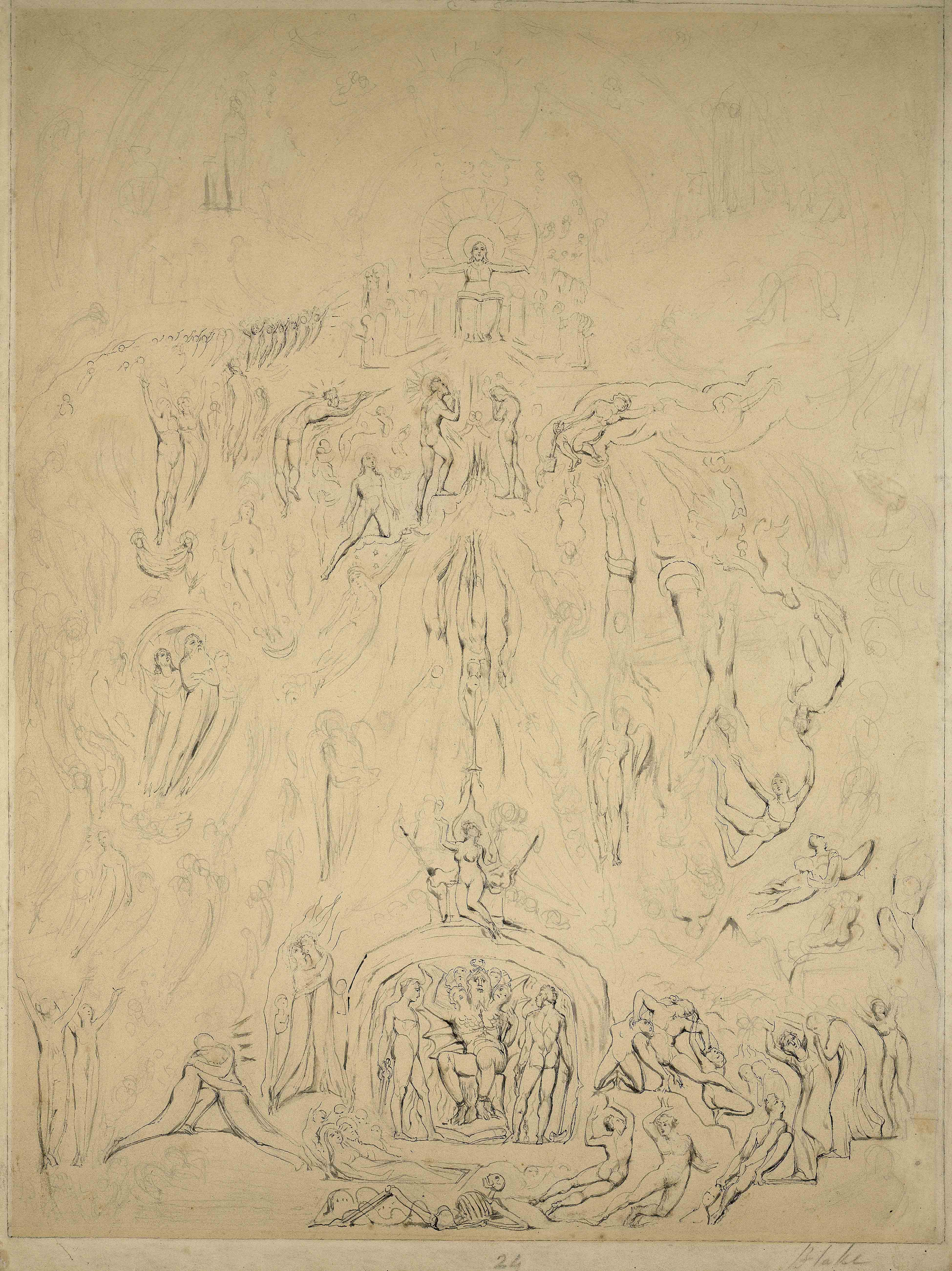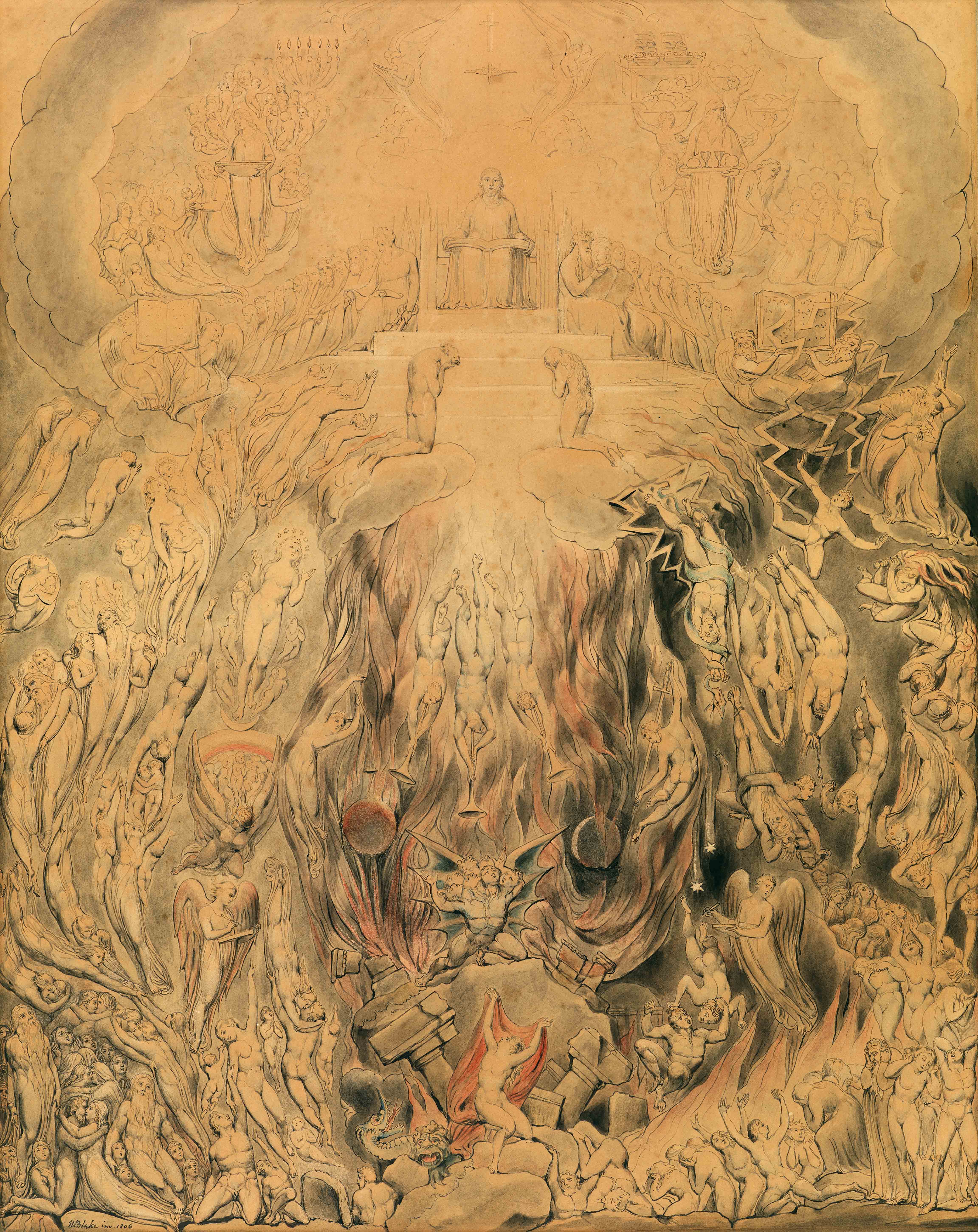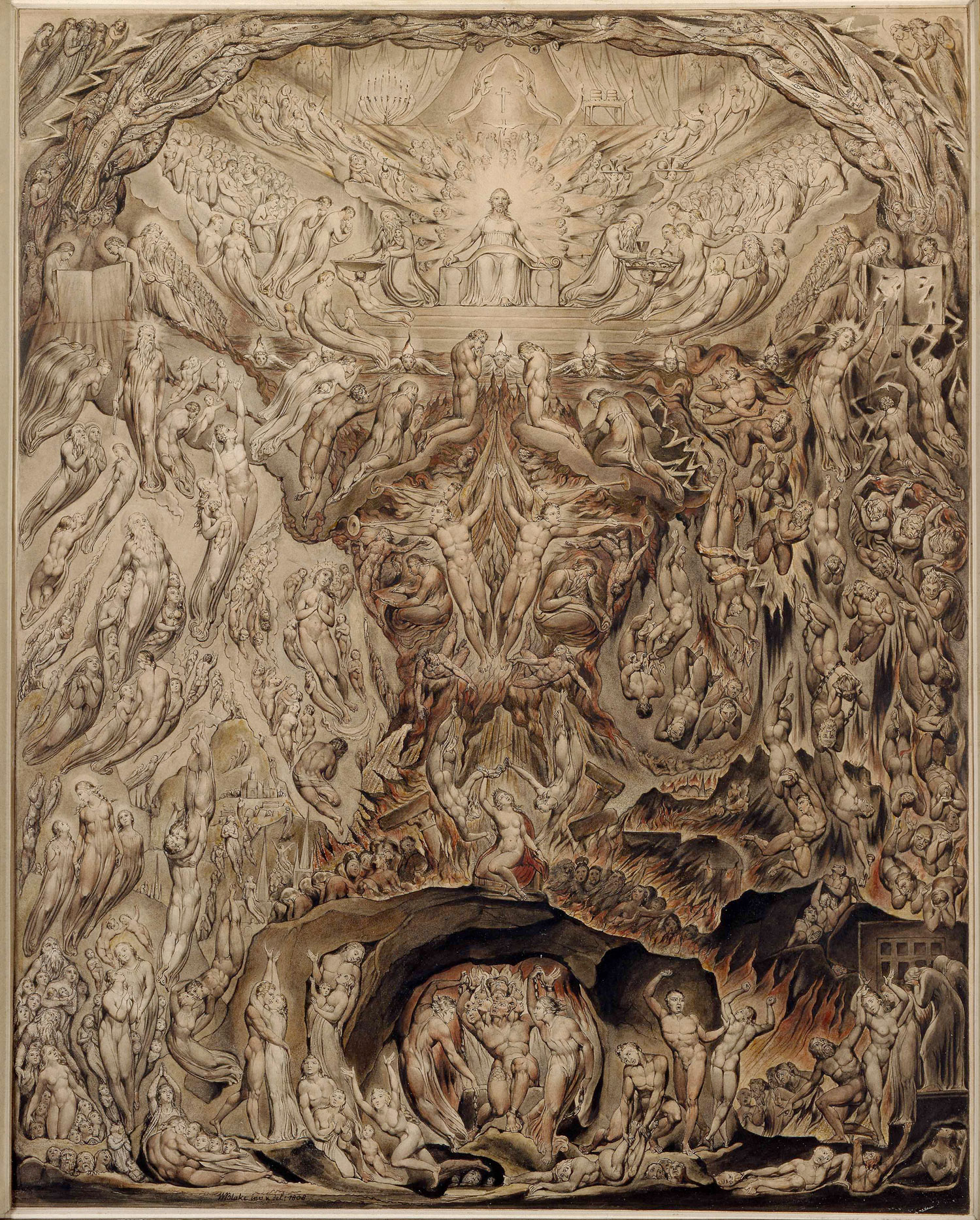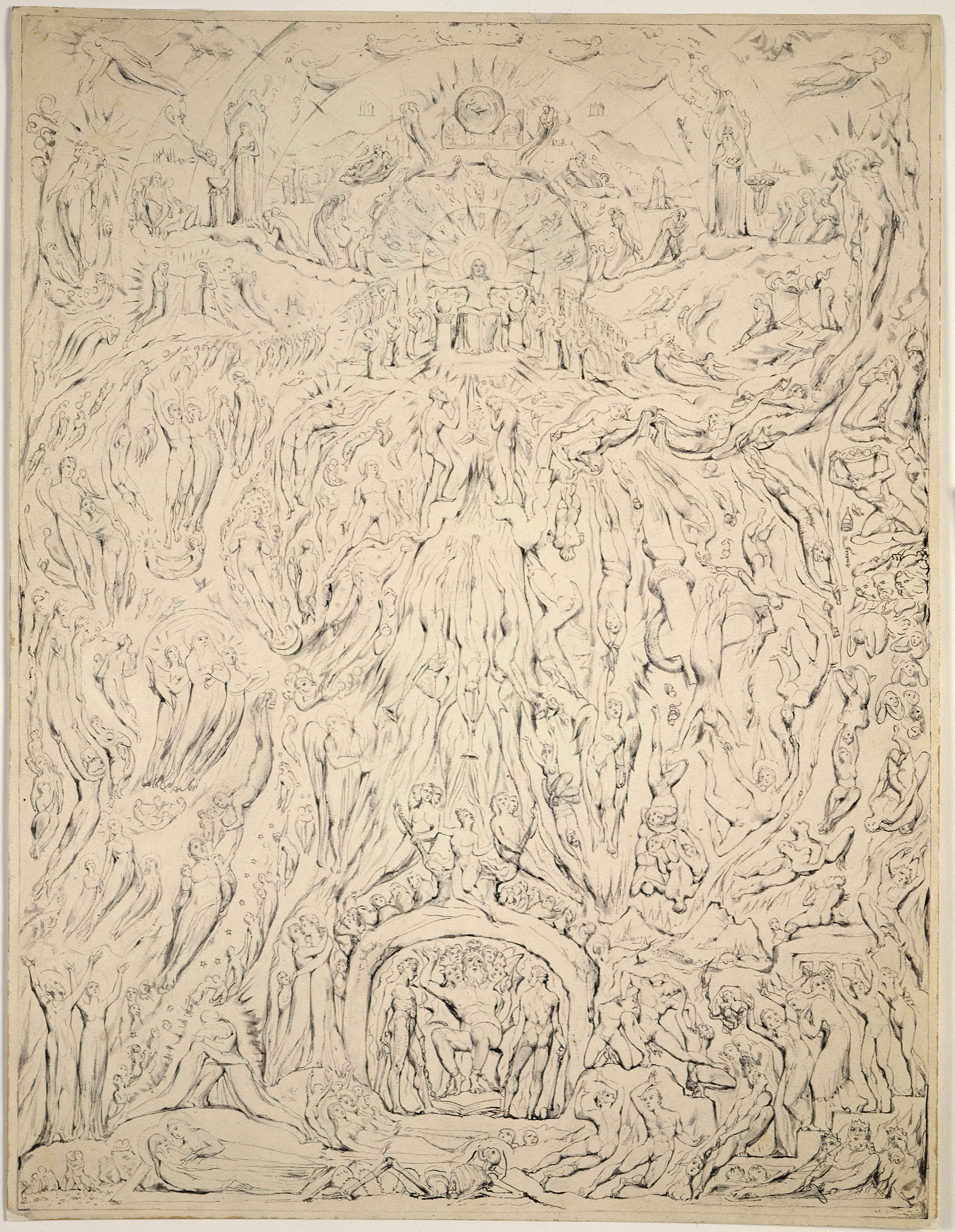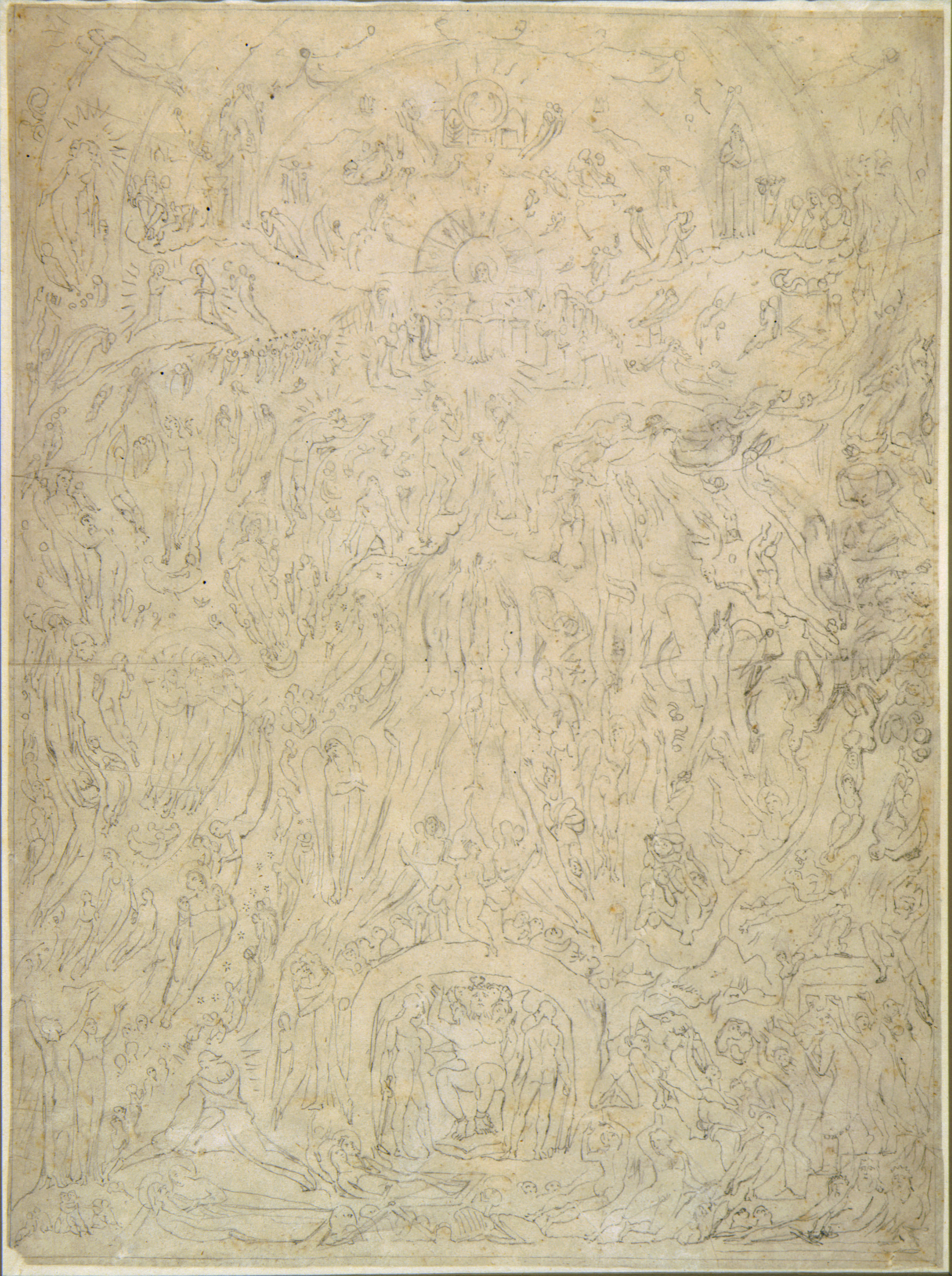note [Blake’s Visions of the Last Judgment: Plates and Editorial Note]
begin page 1 | ↑ back to topEditorial Note
This pamphlet includes all of Blake’s pictures of the Last Judgment that are accessible in public collections. It does not include the earliest preparatory sketch for the Rosenwald drawing (the so-called “Tatham-Robertson drawing,” listed as no. 643 in Martin Butlin’s forthcoming catalogue raisonné)[e] which was sold to a private British collector in 1949. It does not include two other drawings which have been untraced since the nineteenth century, the first (Butlin 640) is probably a preliminary drawing for the Pollok House version which was purchased by Flaxman in 1806 (see Bentley, Blake Records, 575). The second is a tracing (Butlin 647) which may be identical with the tracing of the Rosenwald drawing reproduced in this pamphlet (no. 6, Tatham-Bateson drawing, Butlin 646). The most important item missing is, of course, the five by seven foot tempera with gold, the climactic version of the Last Judgment which dropped from sight shortly after Blake’s death in 1827.
The pictures are arranged in chronological order, although it should be noted that the year in which the Schiavonetti engraving was published (1808) is not necessarily the year Blake made the drawing for it, and the date of the Rosenwald drawing is disputed (Keynes places it in 1810, A. S. Roe argues for 1820-25). Four distinct treatments of the theme are exhibited here: (1) the Pollok House watercolor; (2) the Petworth House watercolor; (3) the Blair’s Grave engraving; (4) the Rosenwald drawing, together with a preliminary sketch (the Texas drawing) and the tracing mentioned above. It is generally assumed that the lost tempera was based upon the Rosenwald drawing, although the discrepancies between Blake’s drawing and his notebook description (A Vision of the Last Judgment) suggest that the composition was further modified in the final tempera.
Plates[e]
begin page i | ↑ back to top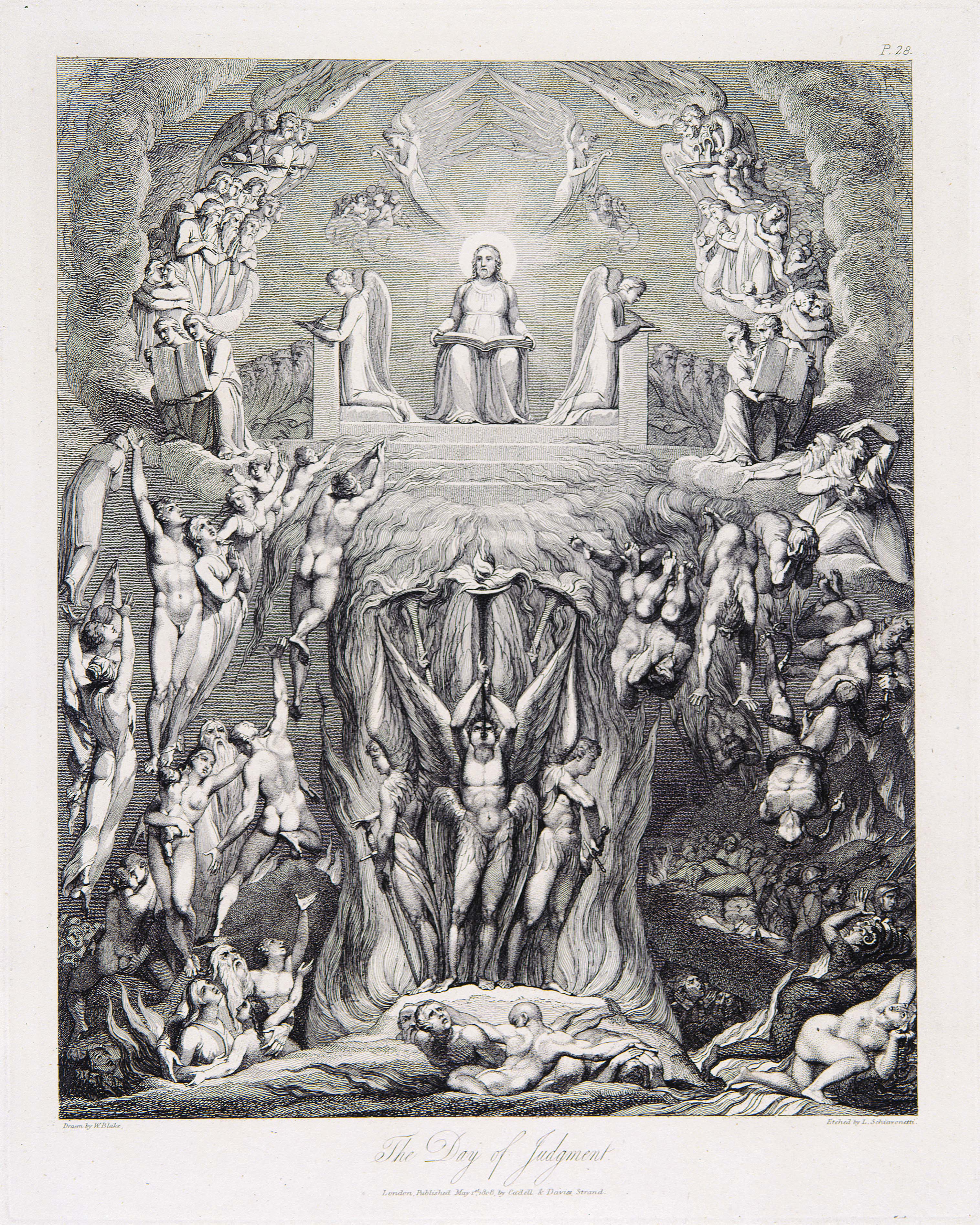
[View this object in the William Blake Archive]
